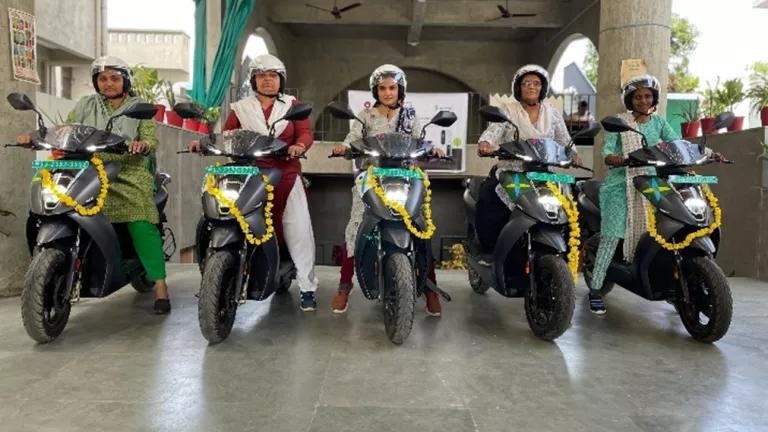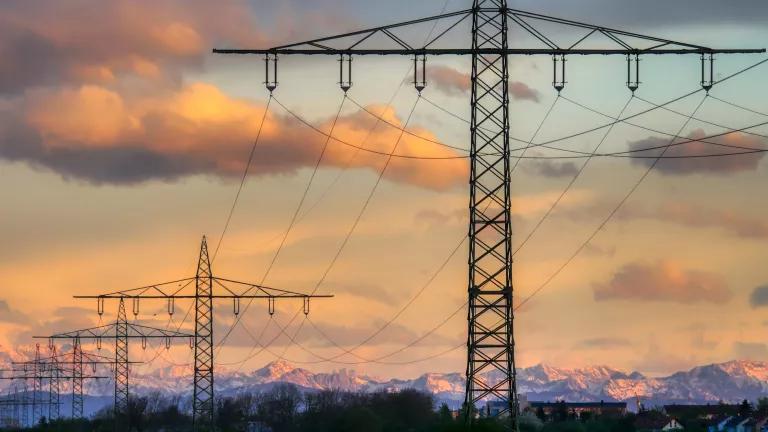Location and Siting of EV Charging Stations in Hyderabad
The locations of the city's initial chargers will work to stimulate growth and adoption of EVs in Telangana.
Coauthored with Charu Lata and Jessica Korsh
With chronic air pollution problems and to reduce greenhouse gas (GHG) emissions, states across India are shifting to electric vehicles (EV). Widespread and accessible public charging is needed to support robust EV use. Telangana in South India is leading the way in working with stakeholders to advance e-mobility, focused on charging infrastructure and more. A technical committee (part of the state-level EV Steering Committee) recently met in Hyderabad to discuss charging infrastructure as part of building codes and public chargers across the city.

Under the national Faster Adoption and Manufacturing of (Hybrid &) Electric Vehicles (FAME I and FAME II schemes), the Department of Heavy Industries (DHI) approved setting up 178 EV charging stations in Telangana. The Telangana State Renewable Energy Development Corporation (TSREDCO) is the state nodal agency in charge of siting EV charging stations.
As the state moves forward with siting 138 charging stations in its capital city, Hyderabad, a crucial question is where to site the stations to ensure that charging stations are easily accessible and to improve the cost economics and utilization of the stations. The locations of Hyderabad’s initial chargers will work to stimulate growth and adoption of EVs in Telangana.
As part of the Telangana steering committee meeting, optimal considerations for siting were discussed: safe 24-hour access to all drivers; high charger visibility with multiple overlapping locations to avoid range anxiety; close proximity to services, such as restaurants, offices and shopping complexes; and that the chargers are on a connected platform for customer convenience.
Government land and distribution company (DISCOM) substations are siting options. Potential locations for charging stations in Hyderabad include: entry and exit points of outer ring roads; near to or inside toll building premises; parking outside public parks and DISCOM substations. For Hyderabad, charging station are allocated approximately 1800 ft2 with potentially seven chargers at each charging station (three 50kW DC fast chargers, three 15kW chargers and one 10kW AC charger).
The three implementing agencies installing the EV chargers in Hyderabad are Rajasthan Electronics & Instruments Ltd (REIL) with 37 chargers, the National Thermal Power Corporation (NTPC) with 32 chargers, and Energy Efficiency Services Limited (EESL) with 49 chargers. Based on an initial feasibility study and survey, the three agencies have selected approximately 50 locations for installation.
State power utilities are working with the charging service providers to ensure that the electrical distribution system in Telangana is robust enough to handle the added EV load. Charging stations located near an existing transformer or electrical room are likely to be the least-cost option. However, this may be at the expense of locations that may be hard to find, undesirable to drivers, or remote to store entrances.
With regard to the chargers and physical space requirements, each site needs to be assessed for infrastructure support as well as ancillary hardware, such as breaker panels, disconnect, and potentially a new transformer. Site control is typically the most challenging aspect of building out an EV charging network. Site selection should be performed by an entity that is neutral and objective.
Eight Steps for Hyderabad EV Charging Station Siting
- Finalize approach and methodology for the siting exercise
- Identification of preliminary locations to site the charging stations
- Preliminary site survey to check for land identification and coordinates, accessibility, and availability of electricity supply.
- Stakeholder consultation with state departments, utilities, charging service providers and sectoral experts to discuss approach, next steps, and take feedback.
- Approval of surveyed locations by TSREDCO, Hyderabad Metropolitan Development Authority (HMDA) and Greater Hyderabad Municipal Corporation (GHMC) to review the preliminary locations.
- Detailed survey of each site in the presence of subject matter experts from TSREDCO, charging service providers and DISCOMs to collect detailed information about the shortlisted sites.
- Selection of sites and GIS mapping – Select sites as per a preapproved criteria and display the selected locations through GIS mapping.
- Establishment of charging stations by the selected charging service providers.
TSREDCO and the Telangana Steering Committee are working with the Administrative Staff College of India (ASCI) and NRDC in evaluating the feasibility of EV charging locations. In the months ahead, the groups are working through the steps for siting to advance electric mobility in India.
A rapid scale-up of charging infrastructure is needed to accelerate electric mobility in India, as recognized by the Indian government. State action supporting charging infrastructure deployment is an essential element to advancing electric mobility in India. Because air quality problems in India are often driven by pollution from the same fossil fuels that accelerate climate change, actions to reduce harmful emissions at their sources can achieve major wins for public health in the near-term and long-term, for the environment, and for India’s economy.
Charu Lata is a clean energy expert working with NRDC as a consultant in New Delhi. Jessica Korsh is a former NRDC Duke Stanback Fellow.



